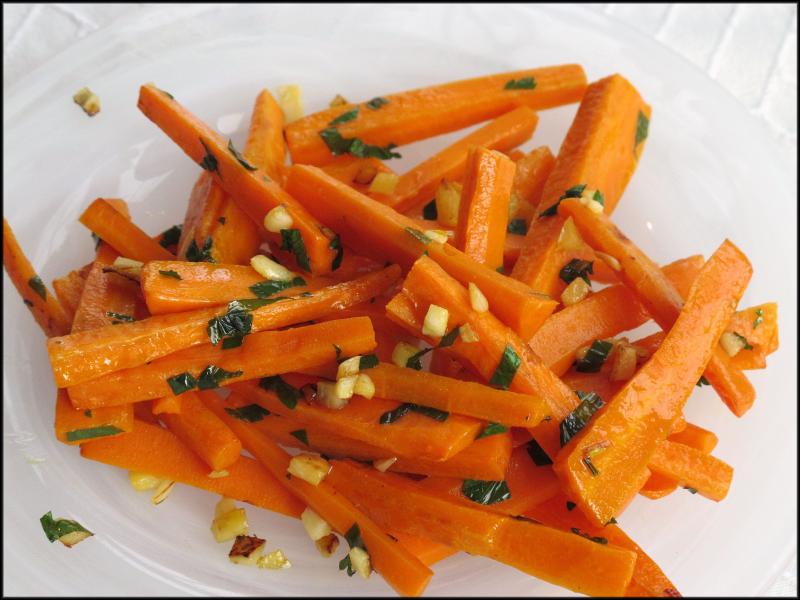Share:
Let’s hear it for root vegetables
October 4, 2019
When we prepare and eat various vegetables as part of a meal, we rarely take notice of whether we’re eating the flower, leaf, fruit or root of the plant. Consider these differences. Artichokes, cauliflower, broccoli and squash blossoms are all flowers of their respective plants. The leaf and leafstalk vegetables we enjoy include Brussels sprouts, cabbage, celery, lettuce, rhubarb, and spinach.
The parts of a plant that contain seeds are botanically considered fruits, but there are several that we treat as vegetables in the kitchen. Tomatoes, green beans, zucchini and eggplant all fall into this category. And finally, the root portions of a wide variety of plants are staple foods around the world. These range from our familiar potatoes and carrots to starchy roots such as taro, essential in Africa, Hawaii and Polynesia.
Without going into the botanical distinction of whether the root is a tap root, tuber, corm or rhizome, it’s sufficient to know they grow underground, absorbing nutrients and water directly from the soil to feed the rest of the plant. Some of these underground sections store nutrients to feed the plant in colder months, making them highly nutritious for us.
While we applaud root vegetables for their vitamin, mineral and fiber content, we should keep in mind that most of them also provide a high concentration of carbohydrates. When planning a balanced menu, you may want to count them as you would a starch, rather than a leafy vegetable, if you are managing carbohydrate consumption.
Some root vegetables are delicious when eaten raw, either sliced into salads or served with a spicy dipping sauce as an appetizer. Carrots, Jerusalem artichokes, jicama and radishes are good examples. Jerusalem artichokes, also called sunchokes, have a nutty, sweet, crunchy flesh; they perform more like white potatoes when cooked.
Root vegetables that are members of the allium family include onions, garlic and shallots. These are typically cooked, although all of these will add a lovely bite when incorporated raw: garlic cloves in pesto, onions sliced on a burger and shallots whisked into vinaigrette.
Among my favorite root vegetables are the ones that become sweet and tender when roasted. Potatoes, carrots and parsnips are among the most delicious (in my book) when tossed with a drizzle of olive oil, salt and pepper, then spread across a baking sheet and oven-roasted until caramelized.
There are a few things about carrots that make me sad. First are the packages labeled “baby carrots” filled with rounded stubs. These are not at all youthful; they’re actually mechanically carved from larger, drier, older carrots. They may be easy to handle for childrens’ lunchboxes, but I find they’re better for feeding to dogs as a healthy snack.
The other problem I have with carrots (I readily admit this is entirely a personal preference) is when they’re served “glazed.” A young, tender carrot does not need a slick coating of brown sugar, honey or maple syrup. For the dish of carrots in the photo, we simply combined lemon juice and butter with garlic and parsley to gently sauté the orange beauties.
The final insult to a carrot is to overcook it. The ones in the photo were simmered for just 5 minutes in boiling water, then transferred to a skillet with seasonings and herbs. They remained firm yet tender and absorbed bright lemon flavor along with a subtle garlic bite. Remember, early autumn is the best time of year to enjoy your roots!
Carrot & Garlic Sauté
1 lb carrots
1 T butter
2 T lemon juice
3 cloves garlic
2 t chopped parsley
salt & pepper, to taste
Peel and trim the carrots; cut into evenly sized matchsticks or slices. Bring a saucepan of water to a boil over high heat. Add carrots and cook for 5 minutes. Drain in a colander; set aside. Melt the butter in a large skillet. Add the carrots and shake the skillet to combine. Add lemon juice and garlic; cook until garlic is fragrant, about 2 minutes. Stir in parsley and season to taste. Yield: 4 side dish servings. Note: if carrots become too soft, transform this into soup by adding vegetable broth and pureeing with an immersion blender.
Roasted Carrots*
2 lbs carrots
3 T olive oil
salt & pepper, to taste
1 t chopped dill or parsley
Preheat oven to 400 F. Line a rimmed baking sheet with aluminum foil; set aside. Peel and trim the carrots. Cut them on the diagonal into 1-inch slices. On the baking sheet, toss the carrots with the olive oil until completely coated. Sprinkle with salt and pepper. Bake until tender and slightly caramelized, about 30 minutes. Garnish with dill or parsley to serve. Yield: 4 to 6 side dish servings. *Note: this recipe works just as well with beets, parsnips or a combination.
Braised Root Vegetables
1 lb carrots
1 lb parsnips
1 lb red potatoes
3 yellow onions
2 T olive oil
1 t thyme
1 t chopped rosemary
Peel and trim the carrots; cut into 1-inch chunks. Peel and trim the parsnips; cut into 1-inch chunks. Halve or quarter the potatoes so they are similar in size to the other vegetable pieces. Cut the onions into eighths. Heat a large Dutch oven or heavy-bottomed pot over medium-high. Add the olive oil and vegetables, tossing to combine. Pour in broth, cover and reduce heat to medium-low. Simmer until tender and most of the liquid is absorbed, about 20 minutes. Just before cooking is finished, stir in thyme and rosemary for the last 5 minutes. Season to taste with salt and pepper. Yield: 8 servings.




















































